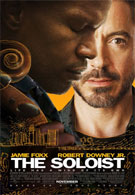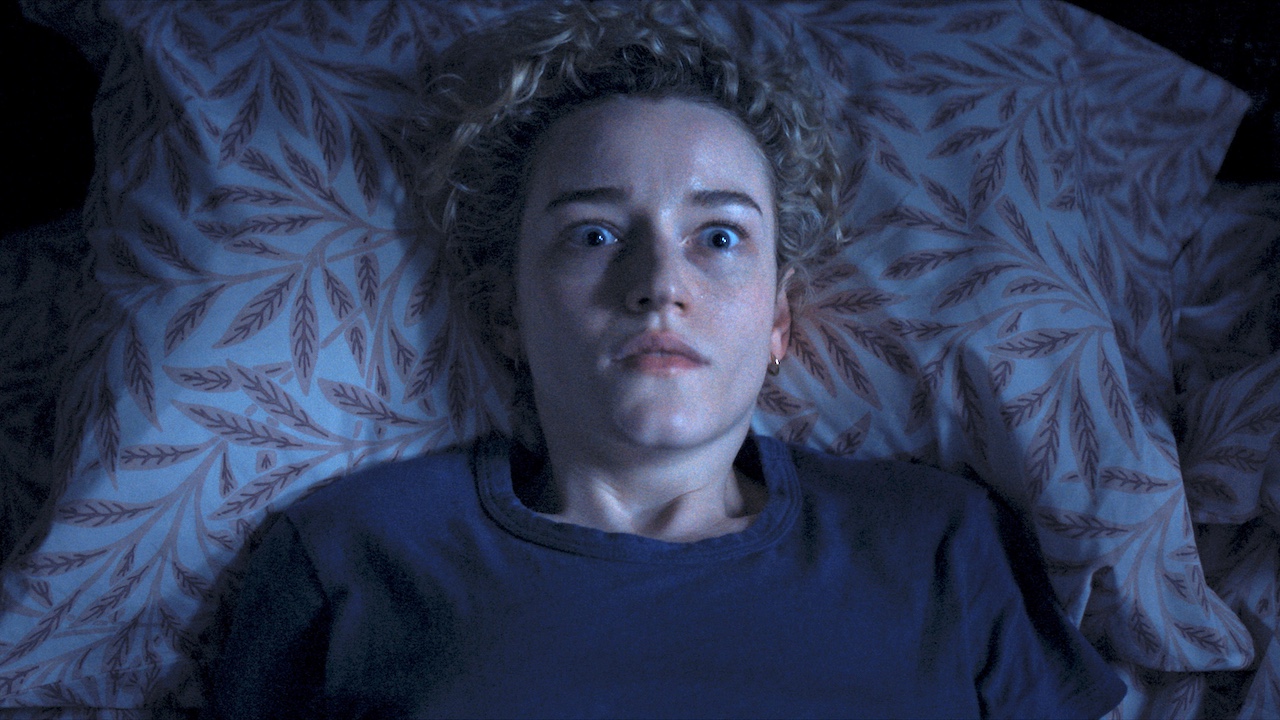Though complicated by the vagaries of real life, The Soloist is essentially a pat redemption story, about two unlikely friends who have so much to learn from each other. Director Joe Wright seems to think the movie is more than that, and throws in metaphors about life in Los Angeles and some real homeless actors to share some of that perceived depth with the audience. For the most part it doesn't work, and neither, in the end, does The Soloist.
A big part of that problem is the story's real-life origins, coming from a series of columns written by Los Angeles Times columnist Steve Lopez (Robert Downey Jr.) when he met Nathaniel Ayers (Jamie Foxx) in a chance encounter on the street. Camped outside the Disney Concert Hall, Ayers makes beautiful music on a two-stringed violin, and Lopez soon discovers the homeless man had been a cellist at Juilliard before crippling schizophrenia put his life in free fall. Lopez, divorced and seeking both some kind of direction in life and a good story, offers Ayers a cello donated by a generous reader, then private lessons with the Los Angeles Symphony's lead cellist, then a safe space to store the instrument. Nathaniel, whose rambling mutterings only occasionally give insight into his racing thoughts, is resistant and sometimes hostile, insisting that beneath the freeway is the best place to practice his music.
In a series of overwrought flashbacks starting in Nathaniel's childhood, we see his early musical gift as well as his downfall at Juilliard at the hands of his illness. Wright uses every cinematic trick he has to give insight into Nathaniel's mind, from ear-splitting sounds to repeated shots of a screaming baby on a television screen, but the scattered approach is never all that effective. Schizophrenia, a baffling and horrible illness, is no more comprehensible here, even as Nathaniel slowly becomes a sympathetic, fascinating character.
Wright's heavy directorial hand works a little better in his more expressionistic moments, visualizing Lopez's joy at hearing Nathaniel play the cello for the first time by following a flock of birds flying over the freeways, or even the slightly goofy color explosion that supposedly happens in Nathaniel's brain when he sees the Los Angeles Symphony play live. Though he blunders so badly in examining the the complexities of the relationship between Ayers and Lopez, Wright captures real truths about life in an alienating place like Los Angeles, and the ecstasy that music can bring to even the most lost soul.
Had the story been more solid, Wright's loftier themes might have carried the rest of the film along. But Downey Jr. and Foxx are stranded doing some great work in a film that won't reward it, playing a character who seems purely self-absorbed and uninteresting (Downey Jr.) or who is completely inaccessible (Foxx). Let's not even get into Catherine Keener, who plays Lopez's ex-wife and is wasted except as an audience surrogate to share our exasperation with Lopez's lack of insight. It takes the character the entire movie to figure out that, given that Nathaniel was calling him Mr. Lopez, he should have responded by calling him Mr. Ayers. He never really does figure out that, for some homeless people, a roof over their head isn't necessarily the solution.
Like Marley & Me, a movie also based on a series of newspaper columns, The Soloist relies on its main character so much that liking him is the key to the entire film, and despite the immense bonus of being played by Robert Downey Jr., Steve Lopez is not a character worth spending an entire movie with. Nathaniel Ayers may be, and had The Soloist been his story instead of Lopez's, Foxx and Wright could have worked together to give a new, incisive portrait of schizophrenia. Foxx is definitely putting in the effort; The Soloist, however, is settling for something much less.
Your Daily Blend of Entertainment News
Staff Writer at CinemaBlend


